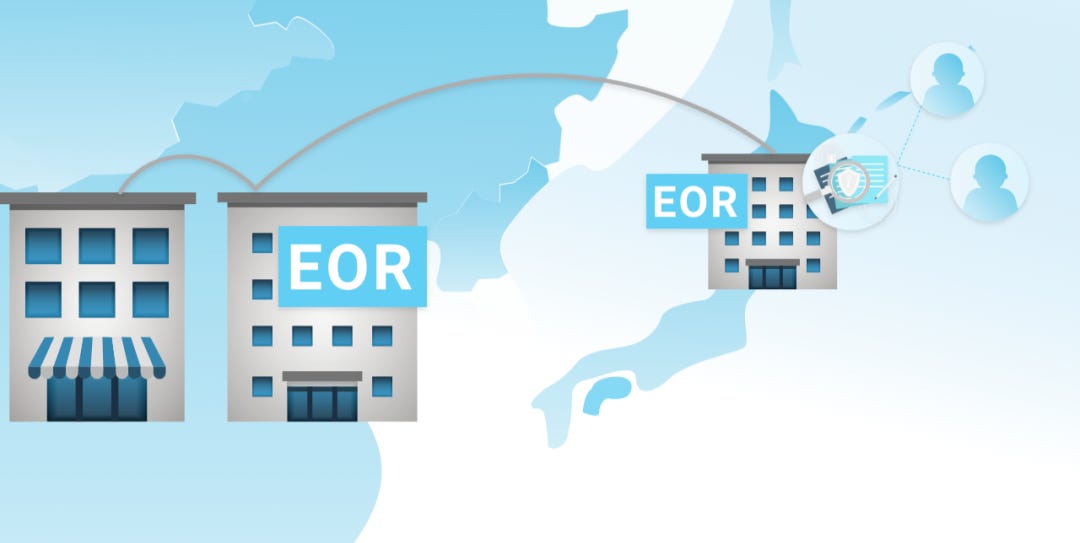Localizing Talent, the Recipe for Globalization
Whether it's venturing into overseas markets as a startup or cultivating deeply the local markets, international enterprises can find suitable team-building models that fit both their needs and the local environment. However, more importantly, how can companies effectively cultivate a truly international team, promote collaboration, and achieve their global expansion goals?
Nowadays, Chinese enterprises seeking global expansion are undergoing a new phase from "product globalization" to "brand globalization," transitioning from "going out" to "integrating in" and eventually incorporating into local communities. A series of new challenges involving internationalization and localization are emerging, catching the attention of business operators. Ultimately, the key to achieving "Glocal" lies in the people.
One important issue in addressing the challenges of localizing enterprises is talent management. Whether an enterprise can establish itself overseas, deepen its roots, and achieve sustained market integration and expansion depends on a diverse team with international thinking and local insights. Such a team can understand local communication nuances and seize business opportunities abroad.
So, how can Chinese enterprises build and manage their international teams? Should they send Chinese employees abroad or directly recruit locally? What are the risks of employing overseas workers? What are the challenges in team management? Drawing on the practical experiences and cases of multiple enterprises, this article attempts to distill the common models, risks, and management advice for talent management in overseas teams adopted by mainstream Chinese enterprises today.
01 Third-party Employment as the Key
There are three common forms of employment for companies going global: labor dispatch, direct employment, and third-party employment.
For Chinese enterprises that have already established legal entities within the jurisdiction of other countries, they typically combine the labor dispatch manner with direct employment to build their teams. Labor dispatch involves sending Chinese employees to other countries. Direct employment means hiring local employees, which is necessary for overseas employment since many countries require foreign companies to increase local employment ratios based on the local laws and regulations.
However, for companies initiating overseas business for the first time or at the startup stage of their overseas operations without establishing a legal entity in the target market, third-party employment is the preferred choice. It's worth noting that in most jurisdictions, companies without legal entities that dispatch or employ workers overseas face significant compliance and penalty risks.
Third-party employment includes labor dispatch or outsourcing. Here, we'll focus on a relatively new form of third-party employment called Employer of Record (EOR). EOR is somewhat similar to labor dispatch and outsourcing but has its own distinct features. It is particularly suitable for companies looking to expand into global markets, understand overseas business environments, and have no physical presence in the local market.
As a legal employer, the EOR assumes all statutory employer responsibilities (in the labor dispatch model, the company sending the dispatched employees still bears the main employment risks), including managing the onboarding, contracting, compliance, taxation, benefits, insurance, and compensation of employees in the region.
Employees hired by the EOR work for the actual employer, while the actual employer retains absolute control over hiring, termination, and other daily HR affairs. It can be understood simply as the EOR "leasing" employees to the actual employer. This form of third-party employment has become increasingly popular overseas, especially in Europe and America, and is also favored by Chinese enterprises. EOR not only effectively mitigates compliance risks but also reduces the financial risks of initial investments for overseas enterprises. If the overseas venture encounters obstacles, withdrawing in a timely manner would not incur significant losses.
However, it should be noted that there are still risks in EORs cooperation. Lawyer Lu Huiwen of Shanghai AllBright Law Offices has pointed out that there are at least two kinds of risks companies must be vigilant about: first, tax risks. For example, if an American EOR provides services to a Shanghai-based company and the employee only conducts research and market studies without generating operating profits, there would be no issues. However, if the employee signs contracts on behalf of the Shanghai company, it would be considered actual business activity, potentially violating local tax regulations. The second is qualification risks. Countries like Germany has a strict requirements for the qualifications of EORs, and they will re-evaluated qualification annually. Therefore, Chinese companies must pay close attention to whether an EOR has the necessary qualifications when choosing one.
02 Managing Overseas Teams, Start with Training
Once past the initial stage of business establishment, companies venturing overseas may begin to need to build their own local teams abroad. Especially in recent years, as more and more industrial manufacturing companies need to set up factories overseas and the local workforce continues to grow, the team structure becomes more complex. This brings fresh blood to organizational management and business vitality, along with greater challenges. It also requires companies to carefully consider their international talent organization layout.
Today, building an international team has become a consensus among Chinese companies. "We cultivate international talents in China and use these outstanding talents abroad. It is not contradictory to have both an international team and a localized management team. But if all managers in overseas factories are Chinese, then it's not an international company. In the real sense, internationalization is represented by people," said Zhang Yuqiang, president of a Chinese fiberglass company, in a media interview. Currently, the company has established factories in Egypt and the United States, emphasizing the principle of "local management" and mutual complementarity between two-way talent exchanges.
From the perspective of labor costs, recent research released by overseas business schools through the media shows that "overall, overseas companies will eventually cultivate and recruit more local talents, as the cost of dispatching employees abroad is relatively high."
A more extreme case is the semiconductor giant TSMC. According to the overseas financial media "Digital Times," the ratio of Asian to non-Asian members on TSMC's board of directors is 6:4. Among the six Asians are Liu De-yin, Wei Zhe-jia, Gong Ming-xin, Zeng Fan-cheng, Hai Jun-ying, and Chen Guo-ci; the four non-Asians are Sir Peter Bonfield (UK), Michael Splinter (US), Moshe Gavrielov (US), and Rafael Reif (US). Compared with other Taiwanese semiconductor foundry companies such as UMC (where the ratio of Asian to non-Asian board members is 9:0), TSMC's executive composition is more diverse, which is considered to be beneficial to TSMC's global decision-making.
Once encountering difficulties in managing international teams, the first solution that comes to mind is training. In the well-known documentary "American Factory," Fuyao Glass provided ample training for employees on both sides to facilitate smooth integration. Similarly, TSMC, which just started building factories in the United States this year, also revealed in media interviews that one of their methods for solving "bipolar management" is to promote rolling exchange and immersive two-way training within the international team, "bringing together nearly a thousand people in a short period of time to work as a team at the Arizona wafer fab, which was indeed a bit challenging. But now it's getting better."
A senior vice president of human resources at TSMC once interpreted the company's organizational culture methodology to the media: "We will try our best to respect each other's values, but we still maintain the regulations and methods of the parent company, because although we come from all over the world, we still have to work for the same goal when we return to the workplace."
03 Diversity and Inclusivity, a Test for the Future Team Management
The diverse and inclusive culture of the team, along with the diversity of employee types, presents an emerging challenge in the process of managing international teams. For many Chinese companies, this is a relatively unfamiliar management area: In many overseas markets, multiculturalism not only means racial, ethnic, and linguistic diversity but also diversity in gender, age, customs, institutional understanding, and various subcultures and value choices. Being inclusive and encouraging diversity in cultural management not only promotes daily cooperation and employee belongingness in international teams but also effectively avoids some overseas-related regulatory risks.
There are also many examples of cultural communication failures. For instance, a Chinese company hired a local white employee in its American office. Later, due to the employee's age and high wage costs, the company's management, who is an Asian, negotiated with the employee about early retirement. Though from the Asian perspective, early retirement would be considered kind. However, the employee viewed it as "age discrimination" and sued the company.
For example, both the United States and Europe have local labor unions operating. In the early stages of going global, seemingly small matters such as the definition of paid and unpaid leave for employees can lead to an overall increase in overseas management costs and make employee relations more complicated. Therefore, cultural and institutional shocks stand as tests for managers of companies sending employees abroad: they need to be proficient in basic management of daily operations and must possess excellent cross-cultural communication and coordination skills and an international perspective.
In summary, in the process of business expansion and market penetration during enterprise globalization, the management challenges of overseas team organization are becoming increasingly complex and variable. The best solution for companies is to prevent problems in advance, such as establishing specialized functions/departments/interfaces to be responsible for the system construction of overseas teams and HR communication. Companies must maintain keen insights into local laws and regulations and social cultural changes.
For example, many Chinese companies operating in the United States have established a "whistleblower system against discrimination." On the other hand, it is also essential to allocate and enhance the company's own cross-cultural management system: when training outbound employees and local employees, cross-cultural management and communication should be important training contents, rather than just focusing on the implementation and output of the parent company's culture.
A successful globalized company must be one that can achieve business internationalization and also localize its team. Today, Chinese companies going global are also advancing on this path, constantly reflecting and practicing, and promoting new perspectives, new thinking, and new methods for international organization management. Looking to the future, how to deepen the local employment market overseas and shape a more friendly employer brand for Chinese companies will be the key factors for the next "successful outing."
Recommended articles from Quadrant Lab
Global Supply Chains Experiencing Continuous Turbulence, Three Key Changes to Be Noticed
Observation of ISE 2024, Chinese Elements Return with Enthusiasm, Professional Audiovisual Moves Towards Intelligence and Sustainability
China’s Companies Going Global in Blooming 2024
Will Software + Robots Disrupt Chinese Manufacturing?





